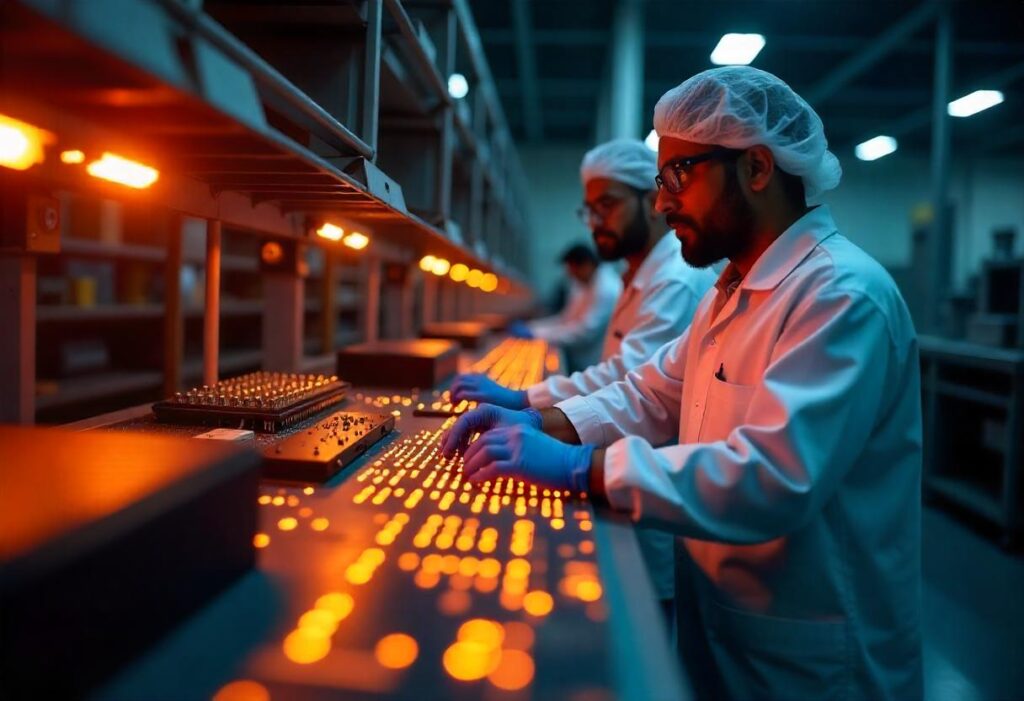India’s government and tech industry are facing a significant challenge in keeping up with China, particularly in deep tech innovation, including fields like manufacturing and artificial intelligence (AI). This lag is attributed to India’s historical focus on service industries over manufacturing, lower investment in research and development (R&D), and a significant outflow of skilled AI talent.
Efforts to Bridge the Gap
In response, India has started increasing its investments and policy support to enhance its AI and semiconductor capabilities. The government is making strategic moves to catch up with global advancements, with a particular focus on reducing reliance on foreign technologies and fostering homegrown solutions.

Criticism of India’s Innovation Landscape
Earlier this month, India’s commerce minister, Piyush Goyal, criticized the nation’s entrepreneurs for prioritizing service-based businesses like food delivery apps rather than driving forward technological innovations. He compared this with China’s focus on developing electric mobility battery technologies, which has led to Chinese startups dominating the electric vehicle ecosystem. This criticism triggered a backlash from Indian entrepreneurs, who pointed to bureaucratic challenges and regulatory hurdles as key obstacles to innovation.
Historical Divergence Between India and China
The technological gap between India and China can be traced back to the 1980s when the two nations diverged economically. China focused on building a strong manufacturing base, while India focused on services. Today, China commands 30% of global manufacturing output, while India contributes only 3%. Despite this, India leads the world in service-based technology, where it outpaces China.
Private Sector’s Role in Innovation
The Indian government has emphasized the role of the private sector in driving innovation in high-tech fields. Abhishek Singh, CEO of IndiaAI Mission, highlighted that while the government can enable the ecosystem, real innovation must come from the industry, startups, and researchers.
Challenges in AI and Talent Retention
Although India has a growing AI startup ecosystem, it remains underdeveloped compared to China. Indian AI startups such as Sarvam AI and Krutrim AI are making strides, but experts believe the ecosystem lacks the scale and sustained momentum needed to compete globally. A key challenge for India is the outflow of top AI talent, with many skilled professionals moving to the U.S. and Europe, while China manages to retain most of its high-quality researchers within its borders.
India’s Strength in Semiconductor Design
India, however, continues to be a strong player in the semiconductor design space, hosting over 20% of the world’s semiconductor design engineers. The country is also home to global tech companies such as Intel, Nvidia, and Qualcomm, which have research and development centers in India. Despite this strength, India’s overall investment in R&D is relatively low. India spends only 0.64% of its GDP on R&D, a figure far below China’s 2.4% and the U.S.’s 3.5%.
Government’s Response and Plans for the Future
The Indian government is ramping up its investment in AI and semiconductor research, with initiatives like the $1.26 billion IndiaAI mission, launched in March 2024. This initiative is focused on reducing India’s reliance on imported chips and supporting the growth of domestic semiconductor and AI industries.

India’s Semiconductor Policy and Manufacturing Plans
India’s semiconductor policy, launched in 2021, aims to catch up with China, which began investing heavily in semiconductor self-sufficiency in 2014. Indian companies, like Tata Group, are making significant investments in chip manufacturing, with Tata establishing an $11 billion semiconductor fabrication facility in Gujarat. These moves are part of India’s broader plan to develop its semiconductor and tech ecosystem.
Global Investment in India’s Tech Sector
The ongoing U.S.-China trade war has created opportunities for India. With China becoming increasingly inaccessible to foreign investors, India’s tech sector may benefit from global companies seeking alternatives. For example, Microsoft has announced a $3 billion investment in India’s cloud and AI infrastructure, while Amazon has committed $120 million for AI and manufacturing development in the country.
Optimism for India’s AI Future
Despite the challenges, there is optimism for India’s future in AI. Nandan Nilekani, co-founder of Infosys, believes India is well-positioned for faster AI adoption due to its recent digital transformation. He emphasized that the focus should shift from merely building AI models to improving the quality of data, which he sees as the true differentiator in the AI space.
